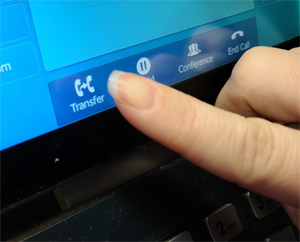MPVEX: Transfer
Differences Between Attended & Blind Transfers
“Attended Transfer” and “Blind Transfer” are two methods used to transfer calls from one party to another. Here’s an explanation of each:
Attended Transfer
- Attended transfer, also known as a warm transfer or consultative transfer, involves the intervention of the person initiating the transfer (often the original recipient of the call).
- When performing an attended transfer, the person initiating the transfer places the caller on hold and contacts the intended recipient to inform them about the call and potentially discuss the reason for the transfer.
- After ensuring that the recipient is ready to take the call, the person initiating the transfer completes the transfer by connecting the caller with the recipient.
- This method allows for coordination between parties and ensures that the call is transferred to the most appropriate person.
Blind Transfer
- Blind transfer, also known as a cold transfer or unannounced transfer, does not involve any interaction with the intended recipient before transferring the call.
- When performing a blind transfer, the person initiating the transfer directly transfers the call to the intended recipient without any prior notification or discussion.
- The caller is typically unaware that they are being transferred until they hear the phone ringing at the destination.
- This method is faster and more efficient for situations where the caller’s query or request doesn’t require any specific context or briefing before transferring the call.

In summary, the main differences between attended transfer and blind transfer lie in the level of interaction and communication between parties before completing the transfer. Attended transfer involves coordination and communication between the transferring party and the intended recipient, while blind transfer does not require any interaction before transferring the call. Both methods have their use cases depending on the specific needs and circumstances of the call.